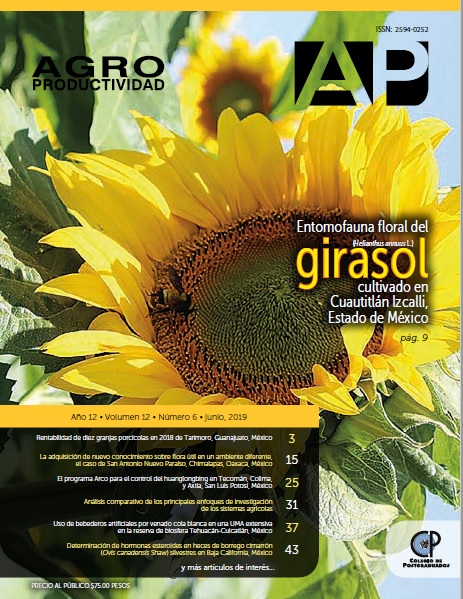Auxin like in liquid humus
Main Article Content
Keywords
auxin like, liquid humus, vegetable growth regulators, germination, inhibition
Abstract
Objective: To evaluate the effect of liquid humus samples (HL) on the percentage, index and rate of germination of Lepidium sativum, Medicago sativa and Raphanus sativus.
Design/methodology/approximation: Liquid humus (HL) samples were obtained from the aqueous extract of a commercial vermicompost. A completely randomized design was performed using different HL:water concentration gradients (1 to 10-4 mg mL-1) and compared to the effect of a 10-10 to 10-2 mol/L concentration gradient of indoleacetic acid. (AIA). An infrared spectroscopy analysis was performed on the HL and AIA samples to compounds identification and/or similar molecular structures between both samples.
Results: The seeds less sensitive to the bioactive compounds present in the sample of HL are M. sativa with the lower inhibition in all treatments. Seeds of L. sativum and R. sativus were more sensitive. The TC, TD and TE treatments corresponding to the HL extracts showed to have biological activity similar to the treatments T06, T07 and T08 of the AIA, with the germination index as the main bioassay to observe this response. The FT-IR analysis of the HL extract showed similarity when compared to the AIA spectrum, finding similarities in the bands corresponding to the indole group, which is the base functional group of the AIA.
Limitations on the study/implications: Is recommended to carry out a second stage of research that includes the extraction of indole compounds to HL samples and their subsequent purification and identification, using spectroscopic techniques.
Findings/Conclusions: Both stimulant and inhibitory effects of germination are due to the presence of bioactive compounds with biological activity similar to plant growth regulators. Therefore, HL samples were analyzed using an infrared spectroscopy, finding signals of compounds with functional groups similar to AIA. This indicate the possibility of the presence of AIA and look for the characterization of the HL extract using purification and identification techniques, such as mass spectrometry.

